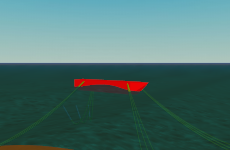


The second model simulated the final stage of the cable pull-in from when the CPS is first engaged through to the end of the cable pull-in to the transmission piece or offshore platform hang-off point. The first model simulated the initial stage of the cable pull-in from when the CPS enters the water until engaged at the monopole. We carried out dynamic 1st end and 2nd end pull-in analysis of the procedures covering seven separate operations involving five cable/cable protection system (CPS) combinations across sets of environmental data. We placed multiple engineers on site in TOWL’s offices to provide analysis support through our extensive capabilities and expertise in Orcaflex. Technip Offshore Wind also looked to further develop their own engineers in this type of analysis for future developments. Technip Offshore Wind required us to provide Orcaflex analysis to underpin and validate their installation procedure to ensure that no cable damage was sustained during the cable pull into the monopile and/or electric substation. Our support covered carrying out cable and cable protection system installation using Global Dynamic Analysis tool, Orcaflex. Now completed, the wind farm exports 210 MW to the national grid. The project was part of the UK Round 2 Offshore Wind development that has seen the installation of 42.5km of 33kV cables. We were contracted to support Technip Offshore Wind Ltd (TOWL) in the installation of inter-array cables for the Westermost Rough development, located 8km off the Yorkshire coast. We also provided formal training to the TOWL team to support their future developments. Our methodology allowed for the winches to be accurately sized allowing the cables to be ‘flown in’ reducing possible damage. We provided Orcaflex analysis for Technip Offshore Wind Ltd to underpin and validate their installation procedure of the inter-array cables for the Westernmost Rough Development and ensure that cable damage was minimised.


 0 kommentar(er)
0 kommentar(er)
